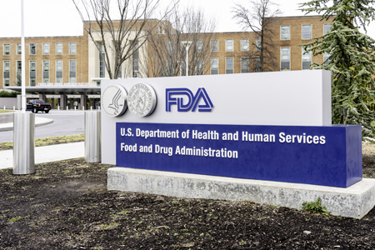FDA Releases Draft Guidance On Use Of Real-World Evidence For Drug & Biological Products
By Bethany Hills and Daniel Rubin, Morrison & Foerster

The FDA has issued new draft guidance in its latest effort to clarify its expectations regarding the integration of real-world data (RWD) and real-world evidence (RWE) into clinical research, product approvals, and post-approval monitoring of drugs.1 An outgrowth of the agency’s Real World Evidence Program, the draft guidance is titled Considerations for the New FDA Guidance on the Use of Real-World Data and Real-World Evidence to Support Regulatory Decision-Making for Drug and Biological Products: Implications for Industry and Research. The draft guidance and FDA’s overall RWE2 program are undertaken pursuant to the 21st Century Cures Act’s mandate to facilitate the use of RWE to accelerate product development and bring products to market more efficiently. The statutory mandate seeks to address longstanding concerns about the limitations of the traditional clinical trial framework, such as the slow pace of Institutional Review Board (IRB) approval of studies; administrative and logistical burdens associated with conducting trials that involve numerous research locations spanning multiple institutions; and regulatory, organizational, and technical impediments to the use of data from outside the laboratory, such as electronic health records (EHRs) and medical claims data in research.i
The draft guidance also serves to facilitate the agency’s policy goal to encourage the use of RWE to support approvals of new indications for drugs already approved under existing indications or to satisfy post-approval study requirements, when applicable.ii This policy objective is pursuant to a statutory mandate under the Cures Act.iii
The guidance is a draft and remains subject to public comment until March 8, 2022.
Key Details
This draft guidance focuses primarily on non-interventional study designs. Such non-interventional studies, also known as observational studies, stem from a research model where patients receive the therapeutic product under study during the conduct of routine medical care. In contrast, traditionally, data gathered to support the regulatory approval of a product is obtained in the context of a clinical trial, an interventional study in which either healthy volunteers or individuals with an identified condition or pathology are assigned to receive one or more interventions in accordance with a protocol, to evaluate the effects of the interventions on measurable outcomes. This emphasis on non-interventional studies accords with the focus on marketed drugs that have been employed in the course of routine medical practice.
The draft guidance lays out certain key considerations for integrating RWD into approval processes in a manner that aligns with the FDA’s expectations for sponsor and investigator conduct. These include:
- Transparency regarding sources of data, parameters for data selection, and the justification for including or excluding potential data sources, as well as disclosure of any differences in patient characteristics of the source population and the study population (the subgroup of the source population to be analyzed) which could potentially influence study findings
- To facilitate transparency the protocol should be posted on a publicly available website such as ClinicalTrials.gov
- Clarity regarding how the data will be analyzed under the protocol
- Avoiding bias in study outcome (or the appearance of bias) by finalizing protocols and statistical analysis plans prior to the conduct of analysis
- Documenting all analyses, including exploratory or feasibility analyses, in a manner that demonstrates that the data set used in the final analysis and the methods of analysis both align with the original research question and do not serve to favor a particular finding or outcome
- Maintaining data integrity
- Ensuring from the outset that the terms of the sponsor’s access to the RWD will permit the submission to FDA of patient-level data for any RWD that has been analyzed as part of a marketing application
These principles are driven by the goal of reducing the risk of bias in data source collection and analysis. The agency has thus set out its expectations for how studies that utilize RWD are to be conducted. As with prior guidance on the use of RWD (including on the use of data sources such as EHRs or medical claims dataiv and the use of RWE in medical device approval),v the agency has highlighted the importance of investigators and sponsors engaging early with the agency as they plan and conduct their investigations, including requesting a Type C meeting to review a draft of their proposed protocol and statistical analysis plan. Among other core principles, this draft guidance articulates the FDA’s standards for transparency regarding data collection, selection, and analysis, as well as study monitoring and safety reporting. The draft guidance lays out FDA’s expectations regarding documentation and validation of such processes to show that they are scientifically rigorous and do not bias the results toward a favored outcome. The agency encourages frameworks for study oversight that employ risk-based quality management approaches to mitigate risks to data integrity and minimize potential harm to research subjects.
The draft guidance affirms FDA’s view that non-interventional studies do not constitute clinical investigations under the regulations governing IND applications. As such, the conduct of a non-interventional study does not require the submission of an IND to the FDA, nor the FDA’s approval. Such studies may, nonetheless, remain subject to FDA regulations on the protection of human subjects and require approval and supervision by an IRB.vi
This draft guidance emphasizes that, even in the absence of an IND, the use of RWD still requires careful compliance with other applicable regulatory requirements, such as the FDA’s regulations for the protection of human subjects. Specifically, the agency highlights the need for uses of RWD to comply with any applicable state and federal data privacy requirements. The use of preexisting data sets that were initially gathered for non-research purposes may raise issues under applicable federal and state data privacy laws in ways not typically encountered in clinical trials that serve as primary data sources and where investigators have obtained the subjects’ informed consent. The FDA advises investigators to seek appropriate guidance regarding data privacy compliance as part of the study design process, as some of these questions of state and federal data privacy law fall outside of the agency’s jurisdiction.
How Does This Draft Guidance Fit In With Other FDA Actions?
Overall, the draft guidance aligns with other steps FDA has undertaken, including the ongoing Complex Innovative Trial Design Pilot Meeting Program, which is intended to support the goal of facilitating and advancing the use of complex adaptive, Bayesian, and other novel clinical trial designs.vii Such innovative trial designs offer the prospect of greater efficiency and smaller cohorts of participants by sharing control arms and studying multiple agents in the course of the same study.
The goals of this draft guidance also appear to align with the industry guidance FDA issued for sponsors of master protocols evaluating drugs for the treatment or prevention of COVID-19 in which FDA has discussed how novel study design models can help researchers “do more with less” through more judicious use of human subjects in research and greater use or re-use of existing data sources. For instance, in the COVID-19 master protocol guidance, the agency has endorsed adoption of more complex research models that either share control arms, draw more heavily on existing data, or use data iteratively to refine the study on an ongoing basis, such as via Bayesian models in which results in one stage of a study can influence what variables or interventions are examined in the next.viii Master protocols are research plans that govern studies designed to examine multiple therapies, multiple diseases, or both, in the context of a single research study.ix In its guidance on the use of master protocols, the agency has articulated the potential public health benefits that could accrue from more flexible research designs, while emphasizing that with complexity can come increased risk of confusion or error. As the FDA has indicated its receptiveness to innovative research modalities, it has also made clear that its underlying high standards for scientific rigor remain unchanged.
Prominent voices from Congress, the policy community, industry, and public stakeholders, as well as the FDA’s own leadership, have acknowledged that the current administrative and regulatory burdens associated with generating data in clinical trials may limit the ability to respond to vital public health needs. The present COVID-19 pandemic has highlighted the urgency of addressing longstanding regulatory and operational challenges to the conduct of research with human subjects. Increased use of RWD to support regulatory decision-making may help to address some of these pressing concerns.
Greater integration of RWD in research for product approval may also help to address a longstanding tendency for certain populations, particularly medically underserved populations with high disease burdens, to be underrepresented in clinical trial populations. This has often resulted in a paucity of data on how drugs, devices, and other therapeutic modalities specifically affect children, women, and racial and ethnic minorities. Lack of diversity can diminish the value of such research. Insufficient diversity in data sources can undermine the value of study data, and potentially put parts of the population at risk after products come to market as treatment effects can sometimes vary between different segments of the population.x Facilitating the use of RWD to address such gaps in evidence may present a potential means for mitigating such risks and, possibly, providing therapeutic benefits more equitably.xi
Increased use of RWD may also help to address some of the intrinsic limitations of the clinical trial framework and the regulatory approval process that relies on it, namely the limited temporal window it captures and the non-representative conditions under which research sometimes occurs. Valuable evidence about safety and efficacy, as well data for optimizing therapeutic modalities and driving further innovation, may be obtainable through the increased engagement with RWD.
 About The Authors:
About The Authors:
Bethany Hills co-leads Morrison & Foerster’s FDA Regulatory & Compliance practice. She advises her life sciences and health tech industry clients on both pre- and post-market issues, including everything from FDA submissions and communication strategies to post-approval FDA and healthcare compliance and reimbursement issues.

Daniel B. Rubin, Ph.D., is an associate in Morrison & Foerster’s FDA Regulatory & Compliance practice. He advises healthcare, life sciences, and pharmaceutical clients on regulatory compliance and the use of health information and other forms of personal data in the research, development, and marketing of FDA-regulated products.
1 For purposes this framework, unless otherwise noted, the term “drug” refers both to a drug approved under section 505(c) or (j) of the Federal Food, Drug, and Cosmetic Act (FDCA) and to biological products licensed under section 351 of the Public Health Service Act (PHSA).
2 Section 505F(b) of the FD&C Act defines RWE as “data regarding the usage, or the potential benefits or risks, of a drug derived from sources other than traditional clinical trials.” 21 U.S.C. §355g(b). FDA uses the term the term RWD to encompass “…data relating to patient health status and/or the delivery of health care routinely collected from a variety of sources.” In contrast, RWE “…is the clinical evidence about the usage and potential benefits or risks of a medical product derived from analysis of RWD.” (Footnote omitted.)
iii 21 U.S.C. 355g.
vi See, generally, 21 CFR 50 and 56.
ix Woodcock 2017 N Engl J Med, 377(1): 62–70.
x W. Nicholson Price. “Big Data and Black-Box Medical Algorithms,” 10 Science Translational Medicine eaao5333 (2018).
xi W. Nicholson Price. “Regulating Black-Box Medicine,” 116 Michigan Law Review 421 (2017).
